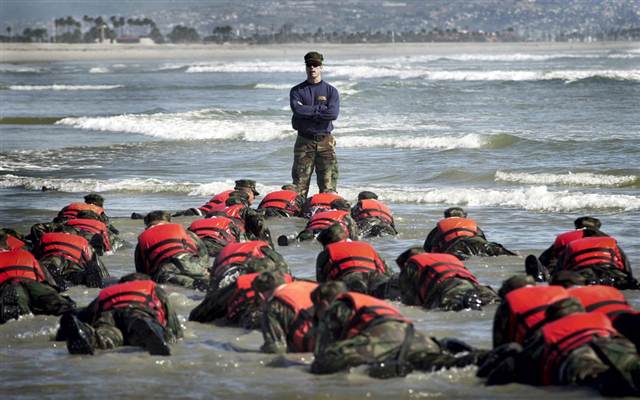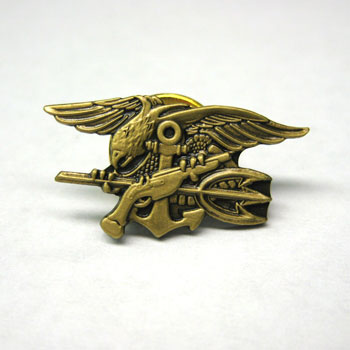
An instructor puts Navy SEAL candidates through a Hell Week training drill in this 2003 file photo taken in Coronado, Calif. Sailors are pushed to their physical and mental limits in the six-month initial training.
It’s good to be a Navy SEAL(美军海豹突击队) right now. The elite(精英分子) sailors are being showered with praise for their successful operation in Pakistan that resulted in the killing of Osama bin Laden this week.
“If the world ever learns the names of those Navy SEALs who took out Bin Laden, those guys will never have to buy their own drinks again,” said @acarvi in a tweet Monday that captured the sentiments(观点,柔情) of many Americans.
The positive publicity will probably boost recruitment(新兵征募) for the special operations unit, but before you apply you need to look beyond the excitement and figure out if you have what it takes.
“It’s not a Rambo movie,” said Jeff Everage, a former SEAL who spent most of the 1990s in South America in anti-drug operations and then went on to Iraq until he retired in 2003. “Instead of focusing on the glamorous outcomes in the news I would focus on what it takes to become a Navy SEAL, the mental and physical demands.”
Only up to 25 to 35 percent of those who enter SEAL training make it through the Basic Underwater Demolition training, known as BUD/S, and go on to become full members of the force and get their Trident pin(海豹突击队的三叉戟徽章), military sources said.


